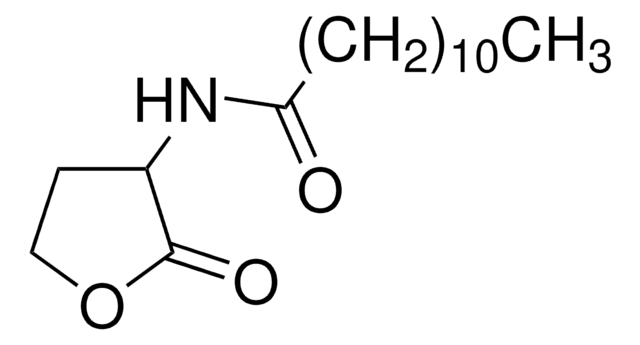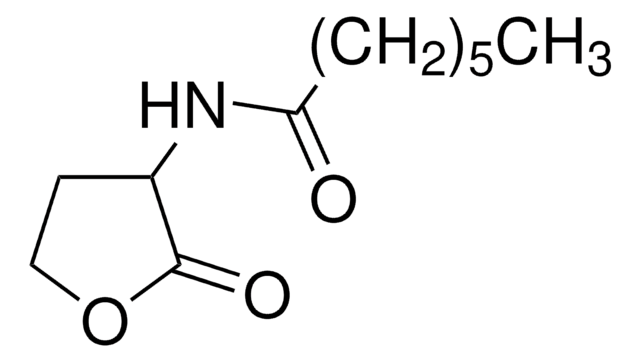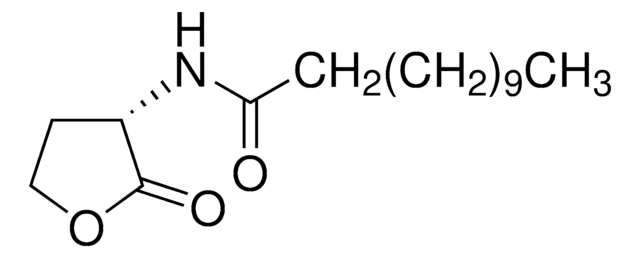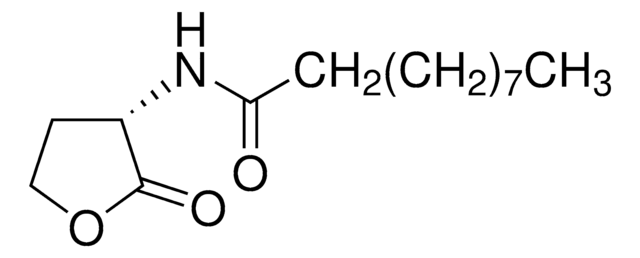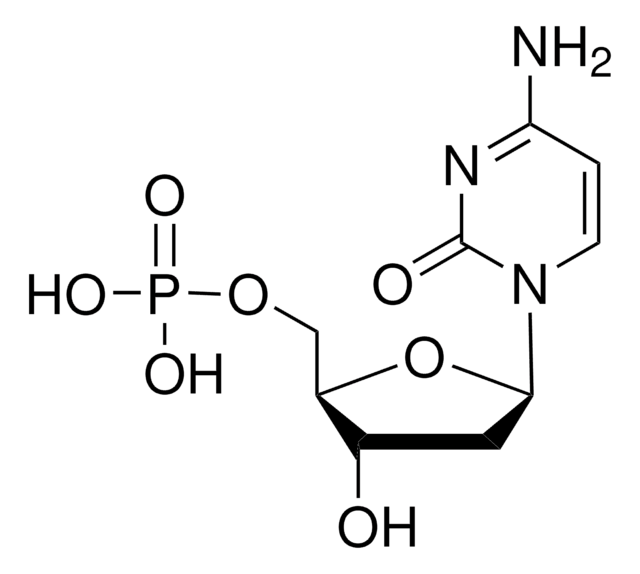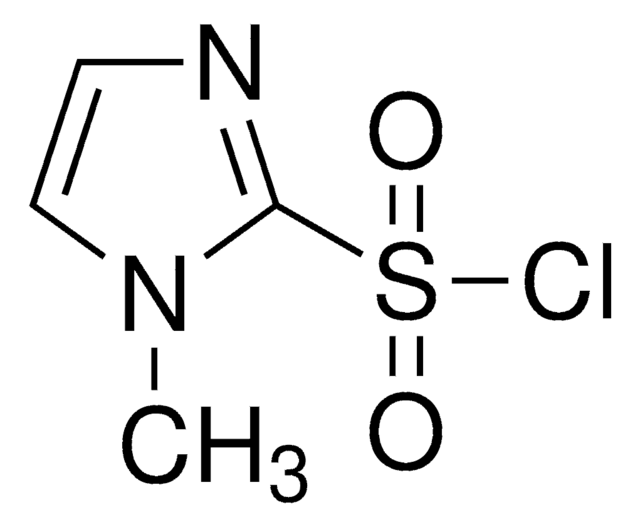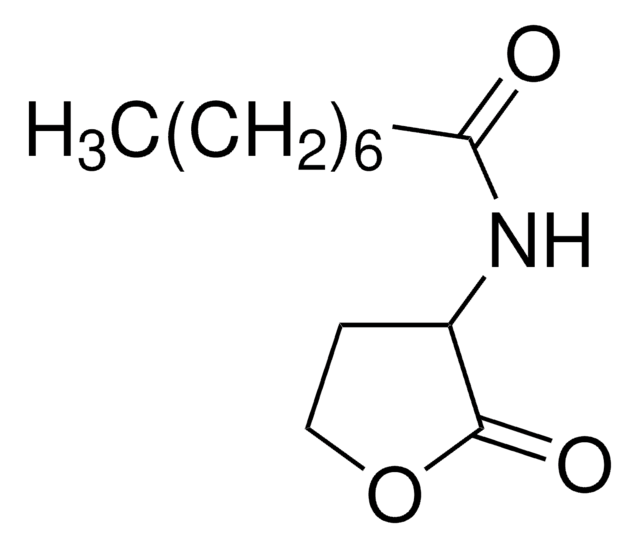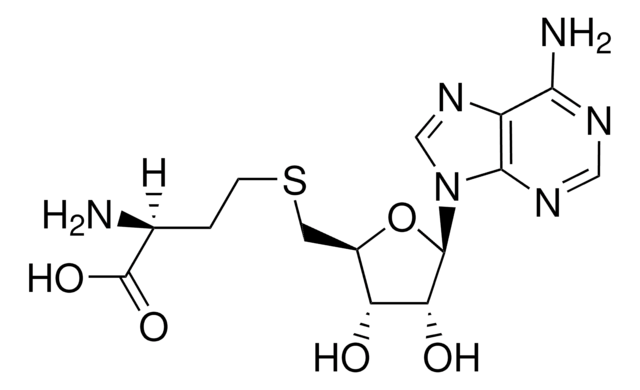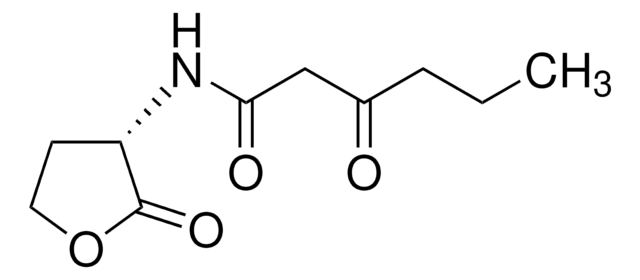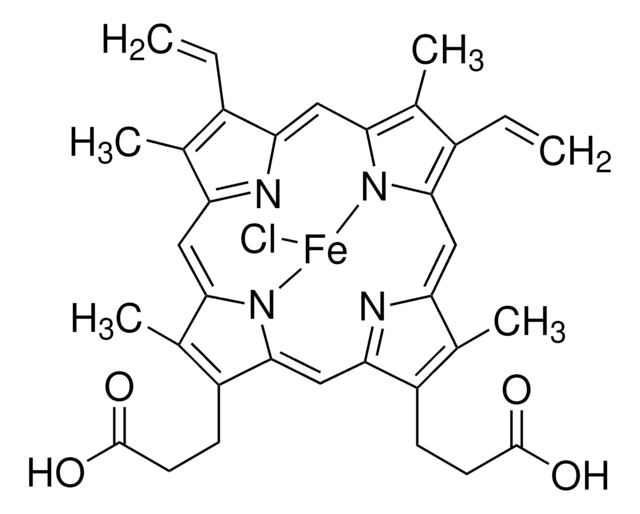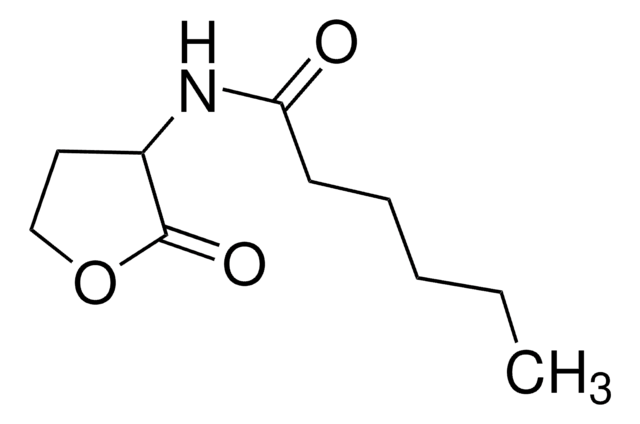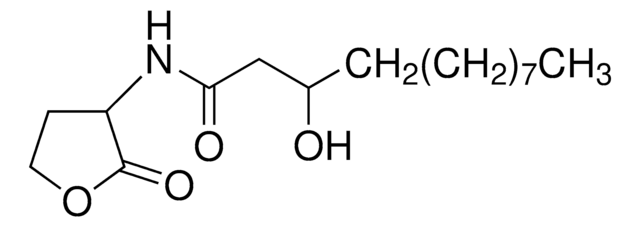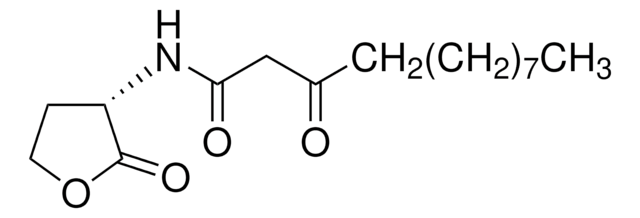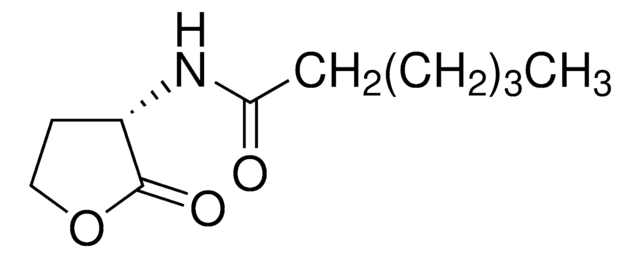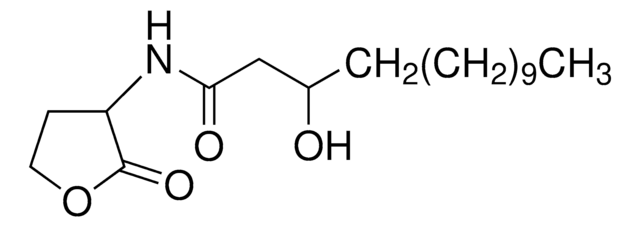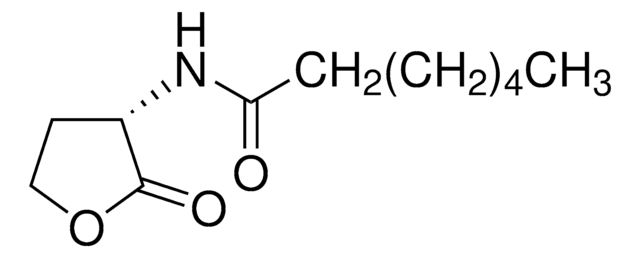10937
N-Tetradecanoyl-DL-homoserine lactone
≥97.0% (HPLC)
Synonim(y):
N-Myristoyl-DL-homoserine lactone
About This Item
Polecane produkty
product name
N-Tetradecanoyl-DL-homoserine lactone, ≥97.0% (HPLC)
Próba
≥97.0% (HPLC)
Postać
powder
kolor
white to slightly yellow
Zastosowanie
cell analysis
temp. przechowywania
2-8°C
ciąg SMILES
CCCCCCCCCCCCCC(=O)NC1CCOC1=O
InChI
1S/C18H33NO3/c1-2-3-4-5-6-7-8-9-10-11-12-13-17(20)19-16-14-15-22-18(16)21/h16H,2-15H2,1H3,(H,19,20)
Klucz InChI
ZQAYHOXXVBVXPZ-UHFFFAOYSA-N
Zastosowanie
Działania biochem./fizjol.
Kod klasy składowania
11 - Combustible Solids
Klasa zagrożenia wodnego (WGK)
WGK 3
Temperatura zapłonu (°F)
Not applicable
Temperatura zapłonu (°C)
Not applicable
Środki ochrony indywidualnej
Eyeshields, Gloves, type N95 (US)
Certyfikaty analizy (CoA)
Poszukaj Certyfikaty analizy (CoA), wpisując numer partii/serii produktów. Numery serii i partii można znaleźć na etykiecie produktu po słowach „seria” lub „partia”.
Masz już ten produkt?
Dokumenty związane z niedawno zakupionymi produktami zostały zamieszczone w Bibliotece dokumentów.
Klienci oglądali również te produkty
Nasz zespół naukowców ma doświadczenie we wszystkich obszarach badań, w tym w naukach przyrodniczych, materiałoznawstwie, syntezie chemicznej, chromatografii, analityce i wielu innych dziedzinach.
Skontaktuj się z zespołem ds. pomocy technicznej